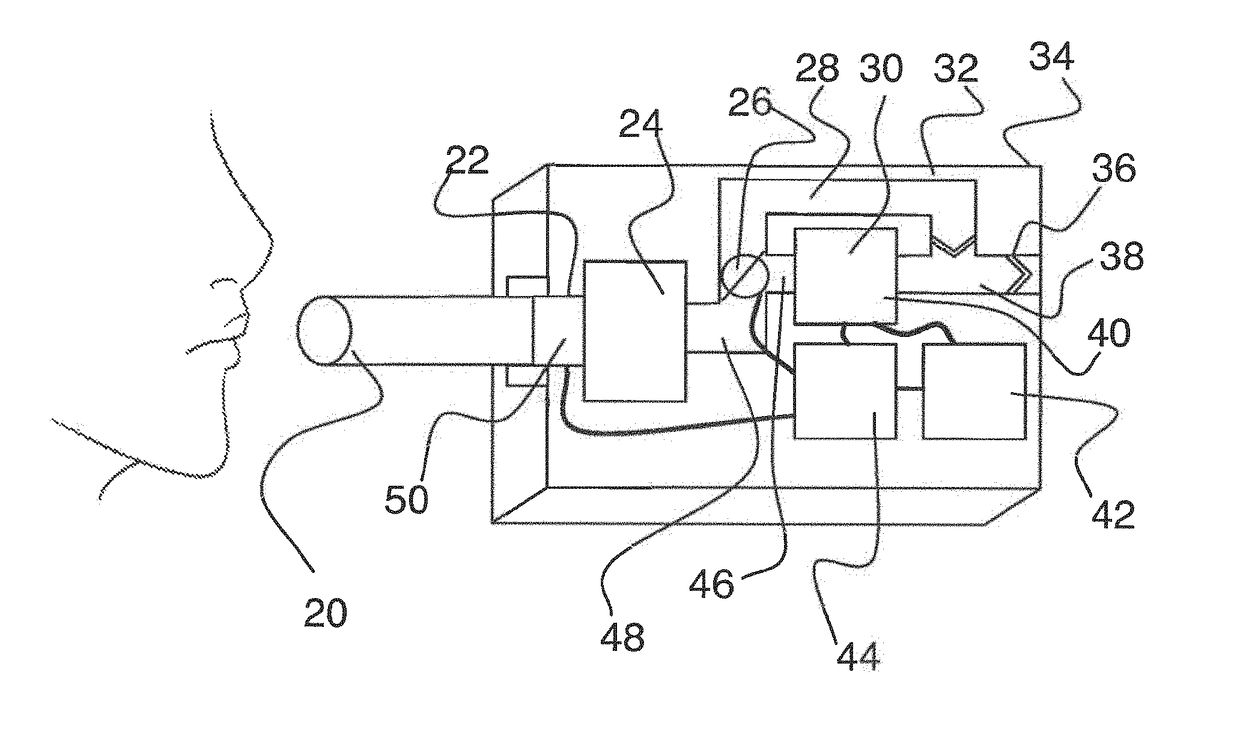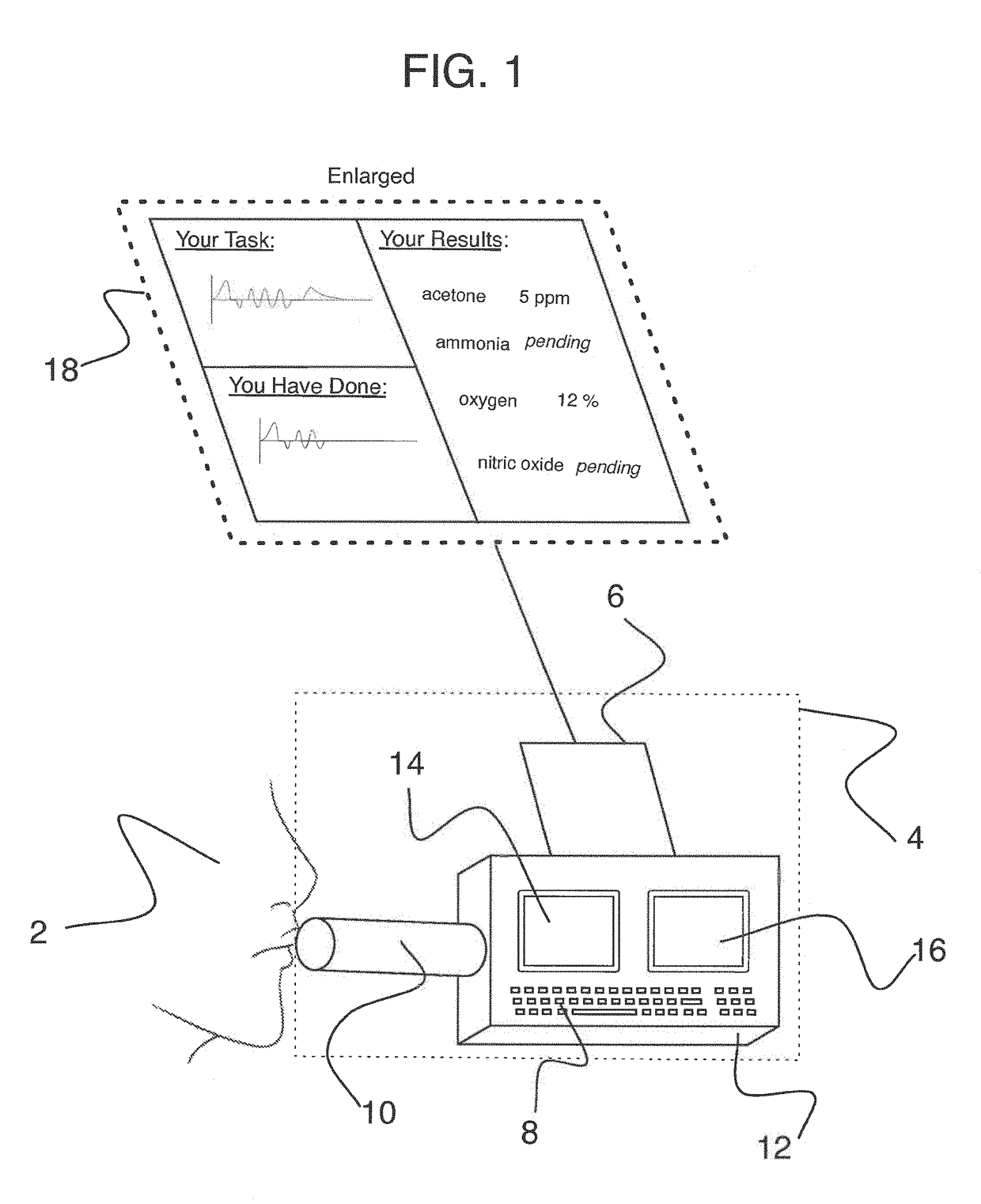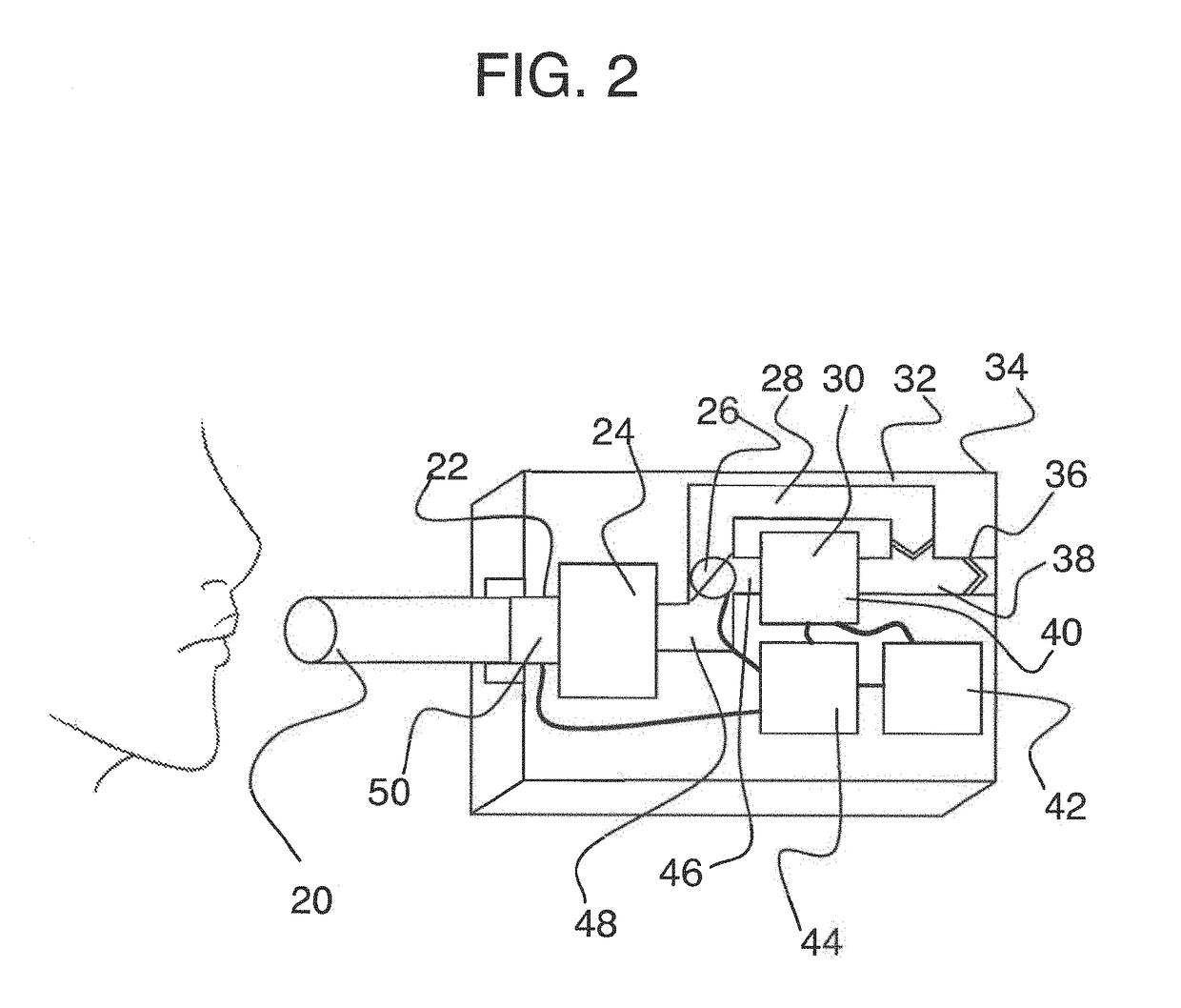Breath analysis system capable of controlling flow of an exhaled breath sample into an insertable cartridge
a technology of exhaled breath and analysis system, which is applied in the field of breath analysis system capable of controlling the flow of exhaled breath sample into insertable cartridge, can solve the problems of affecting patient compliance, introducing delay in the time required to obtain, and taking additional clinical time, so as to facilitate optical changes
- Summary
- Abstract
- Description
- Claims
- Application Information
AI Technical Summary
Benefits of technology
Problems solved by technology
Method used
Image
Examples
Embodiment Construction
[0206]Reference will now be made in detail to the embodiments and methods of the invention as described herein below and as illustrated in the accompanying drawings, in which like reference characters designate like or corresponding parts throughout the drawings. It should be noted, however, that the invention in its broader aspects is not limited to the specific details, representative devices and methods, and illustrative examples shown and described in this section in connection with the preferred embodiments and methods. The invention according to its various aspects is particularly pointed out and distinctly claimed in the attached claims read in view of this specification, and appropriate equivalents.
[0207]In accordance with one aspect of the invention, an apparatus is provided for obtaining information about an endogenous volatile organic analyte from a breath sample of a patient.
[0208]The apparatus according to this aspect of the invention comprises a breath input that recei...
PUM
 Login to View More
Login to View More Abstract
Description
Claims
Application Information
 Login to View More
Login to View More - R&D
- Intellectual Property
- Life Sciences
- Materials
- Tech Scout
- Unparalleled Data Quality
- Higher Quality Content
- 60% Fewer Hallucinations
Browse by: Latest US Patents, China's latest patents, Technical Efficacy Thesaurus, Application Domain, Technology Topic, Popular Technical Reports.
© 2025 PatSnap. All rights reserved.Legal|Privacy policy|Modern Slavery Act Transparency Statement|Sitemap|About US| Contact US: help@patsnap.com



